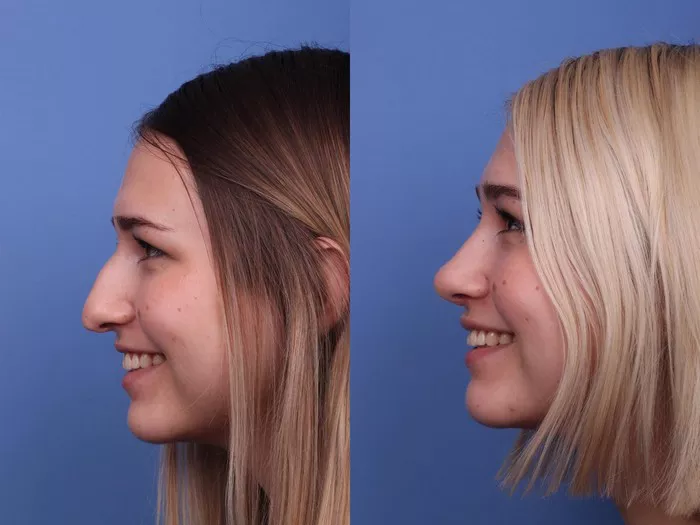Rhinoplasty, or nose reshaping surgery, has long been a popular option for individuals seeking to improve the appearance or functionality of their nose. In recent years, advancements in surgical techniques have led to the introduction of ultrasonic rhinoplasty, a more precise and gentle approach to nose surgery. In this article, we will explore how ultrasonic rhinoplasty works, its benefits, and what you can expect from the procedure.
What is Ultrasonic Rhinoplasty?
Ultrasonic rhinoplasty is a surgical technique that uses specialized ultrasonic instruments to perform precise bone reshaping during a nose surgery. This technique allows surgeons to make controlled and accurate incisions, sculpting the nasal bones with minimal trauma to the surrounding tissues.
The Procedure: How It Works
Ultrasonic rhinoplasty typically involves the following steps:
- Consultation: The process begins with a thorough consultation with a qualified and experienced plastic surgeon. During this consultation, you will discuss your goals, concerns, and expectations for the surgery. The surgeon will evaluate your nasal structure, skin quality, and overall facial harmony to determine if ultrasonic rhinoplasty is the right approach for you.
- Anesthesia: Prior to the procedure, you will be placed under general anesthesia or local anesthesia with sedation to ensure your comfort throughout the surgery.
- Ultrasonic Osteotomy: The key aspect of ultrasonic rhinoplasty is the use of ultrasonic instruments to perform precise bone reshaping. The surgeon will create small incisions in strategic locations to access the nasal bones. The ultrasonic device, which emits low-frequency sound waves, is then used to precisely sculpt and reshape the bones. The ultrasonic vibrations break down the bone structure, allowing the surgeon to make precise modifications without damaging the surrounding tissues.
- Nasal Tip and Cartilage Refinement: In addition to bone reshaping, the surgeon may also address the nasal tip and cartilage. This may involve trimming or reshaping the nasal cartilage to achieve the desired shape and symmetry. Cartilage grafts may also be used to enhance or support specific areas of the nose, if necessary.
- Closure and Recovery: Once the desired reshaping and modifications are complete, the incisions are meticulously closed, and nasal splints or dressings may be applied to support the new nasal structure during the healing process. The length of the procedure can vary depending on the complexity of the case.
Benefits of Ultrasonic Rhinoplasty
Ultrasonic rhinoplasty offers several benefits compared to traditional rhinoplasty techniques:
- Enhanced Precision: The ultrasonic instruments used in this technique allow for precise bone reshaping and sculpting. Surgeons have better control over the shape, contour, and symmetry of the nose, leading to more accurate and natural-looking results.
- Reduced Trauma and Swelling: The ultrasonic vibrations used in the procedure cause less trauma to the tissues compared to traditional methods. This can result in reduced post-operative swelling, bruising, and discomfort, leading to a quicker and more comfortable recovery period.
- Preservation of Nasal Structures: The ultrasonic energy selectively targets the bone, allowing for more precise bone reshaping while preserving the integrity of the surrounding nasal structures. This can lead to improved nasal function and better long-term stability of the results.
- Customized Approach: Ultrasonic rhinoplasty allows surgeons to tailor the procedure to the unique needs of each patient. The precise control and flexibility offered by the technique enable personalized adjustments, ensuring that the final results align with the patient’s desired outcome.
- Versatility: Ultrasonic rhinoplasty can be used to address a wide range of nasal concerns, including humps or bumps on the bridge of the nose, asymmetry, wide nasal bones, and other aesthetic or functional issues.
Considerations and Limitations
While ultrasonic rhinoplasty offers many advantages, it’s important to consider the following factors:
- Surgeon’s Expertise: Ultrasonic rhinoplasty requires specialized training and expertise. It is essential to choose a qualified plastic surgeon who has experience and proficiency in this technique to ensure safe and effective results.
- Individual Suitability: Not all patients are suitable candidates for ultrasonic rhinoplasty. The technique may not be appropriate for complex cases or individuals with certain nasal conditions. A comprehensive evaluation by a skilled surgeon will determine if you are a suitable candidate for the procedure.
- Recovery and Results: While ultrasonic rhinoplasty may result in reduced swelling and discomfort compared to traditional methods, it is still a surgical procedure that requires a recovery period. It’s important to follow the post-operative instructions provided by your surgeon and have realistic expectations regarding the timeline for achieving final results.
Conclusion
Ultrasonic rhinoplasty represents a significant advancement in nose reshaping techniques, offering enhanced precision, reduced trauma, and improved outcomes compared to traditional methods. By utilizing ultrasonic energy, surgeons can sculpt and reshape the nasal bones with greater accuracy and minimal disruption to the surrounding tissues. If you are considering rhinoplasty, it is essential to consult with a qualified and experienced plastic surgeon who can evaluate your individual needs and determine if ultrasonic rhinoplasty is the right approach for you. With the benefits of advanced surgical techniques, you can achieve a harmonious and aesthetically pleasing nasal appearance that complements your facial features.


